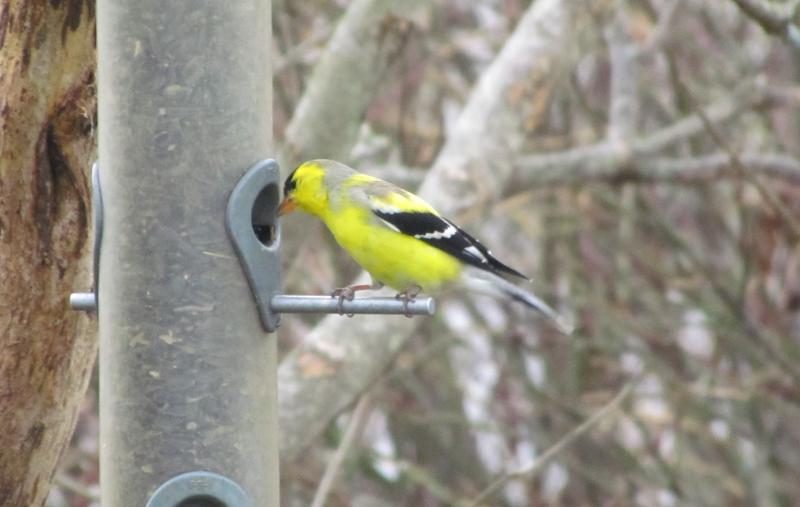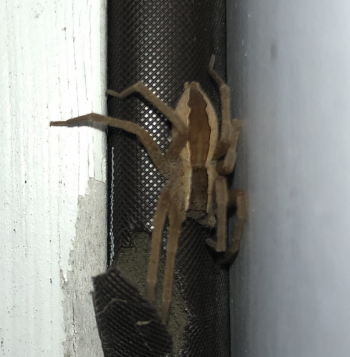Our column two weeks ago was about nature-based activities any of us can do from the backyard, as Maine and the world practice physical distancing due to COVID-19. We have been enjoying watching spring slowly unfold as we have time to pay closer attention to the small things around our home. Yesterday we had the first purple finches at the feeder that we have seen since last fall, and the goldfinch numbers seem to be continuing to climb. Mom Wells told us that she, too, has had the return of purple finches and a growing number of goldfinches. We even had two bluebirds pass through last week! We have rarely seen bluebirds from our property.
Last week we described the joy we have been finding in the songs of the chickadees in our neighborhood. As spring progresses, the songs of many birds are becoming more prevalenrt every morning—cardinals belting out their “cheer, cheer, cheer, cheer” with gusto, song sparrows lilting away from the fence, a downy woodpecker drumming on a hollow limb behind the house across the street, the low “who-WHO-who-who-who” of a mourning dove puffed up on the telephone wire beside the female he is trying to impress. The other day a small flock of red-winged blackbirds came by in the morning, all competing to see who could sing “onk-a-lee” louder.
It sure felt like spring.
On an evening walk around the streets near our home a few days ago, we finally heard the distinctive buzzy, repeated “peent” of a displaying American woodcock from a brushy area behind the quiet school grounds.
It’s not just birds that we’ve been noticing on the warmer days we’ve had. We were rather shocked to see a nursery web-spider appear on the side of the garage door. We had seen one in this same spot last year so we wondered if she could have overwintered or if this could have been one of her offspring. We’ve also had a number of the wonderfully named eastern parson spider make their appearances. The second part of their scientific name is kind of fun, too—ecclesiasticus. Both “parson” and “ecclesiasticus” are references to the abdominal markings of the spider that are thought to look like the cravat (fancy decorative neck cloth) worn by early ministers.
A ladybug appeared in the kitchen one day. We took a picture and loaded it into iNaturalist and learned that it was the Asian lady beetle, Harmonia axyridis. Apparently this is the species that has been commonly released to control aphids in gardens and farms across the U.S.
All of this attention on the backyard got us wondering how many species of various living things we may have documented on our little suburban property. The numbers are not exact, and we have only been trying to identify the insects for a couple of years but we have identified about 140 bird species, 80 insects, 20+ spiders, and at least 12 mammals (including several opossum), all on a lot of less than half an acre in size in a suburban setting.
We can’t wait to see what the next new discovery will be!
Jeffrey V. Wells, Ph.D., is a Fellow of the Cornell Lab of Ornithology and Vice President of Boreal Conservation for National Audubon. Dr. Wells is one of the nation's leading bird experts and conservation biologists and author of the “Birder’s Conservation Handbook.” His grandfather, the late John Chase, was a columnist for the Boothbay Register for many years. Allison Childs Wells, formerly of the Cornell Lab of Ornithology, is a senior director at the Natural Resources Council of Maine, a nonprofit membership organization working statewide to protect the nature of Maine. Both are widely published natural history writers and are the authors of the popular book, “Maine’s Favorite Birds” (Tilbury House) and “Birds of Aruba, Bonaire, and Curaçao: A Site and Field Guide,” (Cornell University Press).
































